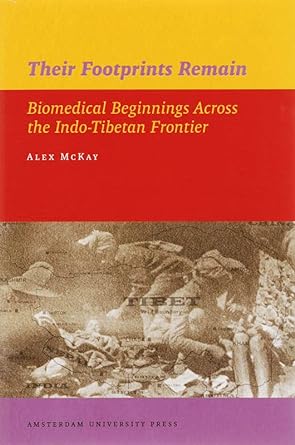The Early Years of IIAS and its Newsletter: A Memoir
Almost exactly two years after the official opening of IIAS on October 13, 1993, I arrived in Leiden to take up a Leverhulme Trust (U.K.) post-doctoral fellowship at the institute. I found a small apartment a few doors from the imposing early 16th-century building that housed the IIAS entrance on Nonnensteeg and began an association with IIAS that has never really ended. It was a time in which academia was being transformed by the arrival of the internet, and my first task was to master the new technology of email, which led naturally into a wider exploration of that extraordinary new research resource.
As a post-doctoral institute, the academic atmosphere at IIAS was very different to that of a university. A coterie of freshly-endowed doctorate holders from a variety of nations pursued their own research interests free of any particular duties or requirements. IIAS Director (1993-2006) Professor Wim Stokhof was a dynamic leader and an innovative and even relentless promoter of Asian Studies. He was also strongly supportive of the ambitions of his shifting cast of research fellows. He freely allocated funding for conferences and workshops and was, above all, prepared to give his people – both staff and fellows – opportunity. Some fellows took full advantage of that opportunity, arriving early at their desks and leaving only when the building closed at night, producing books and articles and building their careers and disciplines. Other fellows squandered the chance, for there were many distractions in Leiden. Aside from the many museums and galleries, it was always tempting to wander the cobbled streets and parks alongside the concentric rings of canals, or to pause and while away the time at the bars and coffee shops scattered along the way.
Lunch was provided for the fellows, with the aim of encouraging conversations that would lead to the cross-fertilisation of ideas and disciplines. The extent to which that occurred was perhaps disappointing, with recent doctorates tending to be firmly wedded to their particular approaches and methodologies. The extraordinary range of subjects under study also made common ground hard to find, except perhaps for agreement over the most congenial cafes and bars. But some lasting contacts and friendships were made, and many seeds eventually bore fruit.
In the years that followed there were a number of wider IIAS initiatives that enjoyed considerable impact in the field of Asian Studies. Not the least of these was the International Convention of Asian Studies (ICAS), the first meeting of which was held near Leiden in 1998 and out of which developed the ICAS Book Prize (IBP) and later the Dissertation Prize. Others included such forums as ASEF (Asia-Europe Foundation) and ASEM (Asia Europe Meetings), as well as a series of publications by IIAS fellows, both in-house and later in partnership with Amsterdam University Press and Leiden University Presses. One particular initiative became central to the identity of IIAS: The Newsletter.
The Newsletter, originally named the IIAS Newsletter, was initially edited by Head of Publications Paul van der Velde, who took on many roles within the institute and went on to become the General Secretary of ICAS. Most recently he has published a memoir, The Asian Studies Parade: Archival, Biographical, Institutional and Post Colonial Approaches (Leiden University Press), which includes more detailed studies of the numerous initiatives in which he has been involved with IIAS and ICAS.

Cover of Their Footprints Remain: Biomedical Beginnings Across the Indo- Tibetan Frontier by Alex McKay, published in 2007 as part of the IIAS Publications Series with Amsterdam University Press.

Cover of The Early 20th Century Resurgence of the Tibetan Buddhist World, co-edited by Ishihama Yumiko and Alex McKay in 2022 for the Global Asia series at IIAS/Amsterdam University Press.
The Newsletter became essential reading for everyone in the Asian Studies field, with its mixture of news, articles, and illustrations filling the need for a publication that embraced every aspect of the field in an engaging manner. It enabled younger scholars to alert others to their concerns and research projects, provided an outlet for more general or even provocative articles than those suitable for a specialist academic journal, and notified us of forthcoming conferences and publications. With the publication being free of charge, many an impoverished student, not least in Asia itself, was delighted to be able to add their name to the mailing list and feel themselves fully a part of the global community of scholars. By the time I joined IIAS, The Newsletter circulation was over 17,000. Before long I was able to assist its spread.
Heading to a conference in Budapest, at a time when Hungary was still emerging from the shadows of the Cold War, I helped IIAS staff at a booth they manned in the conference hall. The gathering had attracted a large number of Eastern European and Russian scholars to whom the free offering of a nice cotton conference bag containing the latest issue of The Newsletter initially seemed too good to be true. When they found the offer was genuine, I was mobbed by eager recipients, who subsequently contributed to the ever-increasing circulation of the publication! There can be few corners of the world which it has not reached.
IIAS has of course changed in its three decades of existence. Most obviously it has moved to a building on the Rapenburg, and Professor Philippe Peycam has succeeded Stokhof as Director. Several hundred scholars have worked there, and the field of Asian Studies has been transformed during that time. What Paul van der Velde has termed “the New Asia Scholar” has emerged as scholars of Asia throughout the world have come into day-to-day communication, but The Newsletter – whether online or in hard copy – has remained required reading. Long may it continue to be so!
Alex McKay, Australia